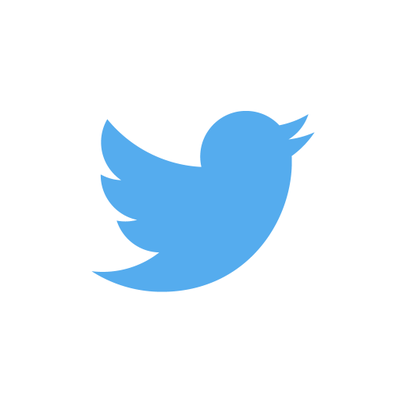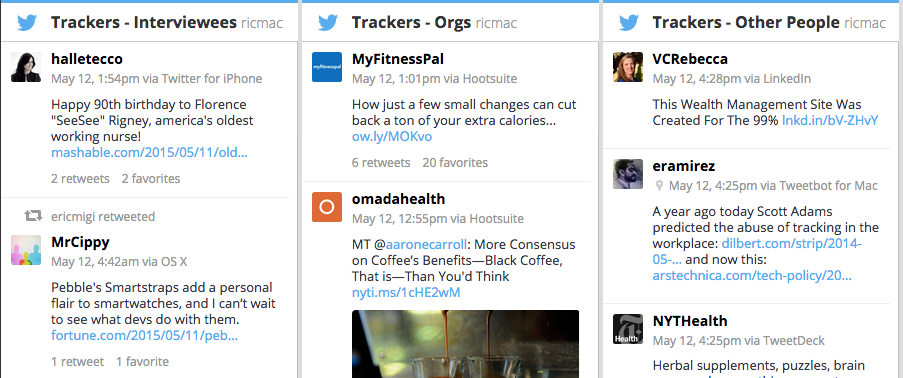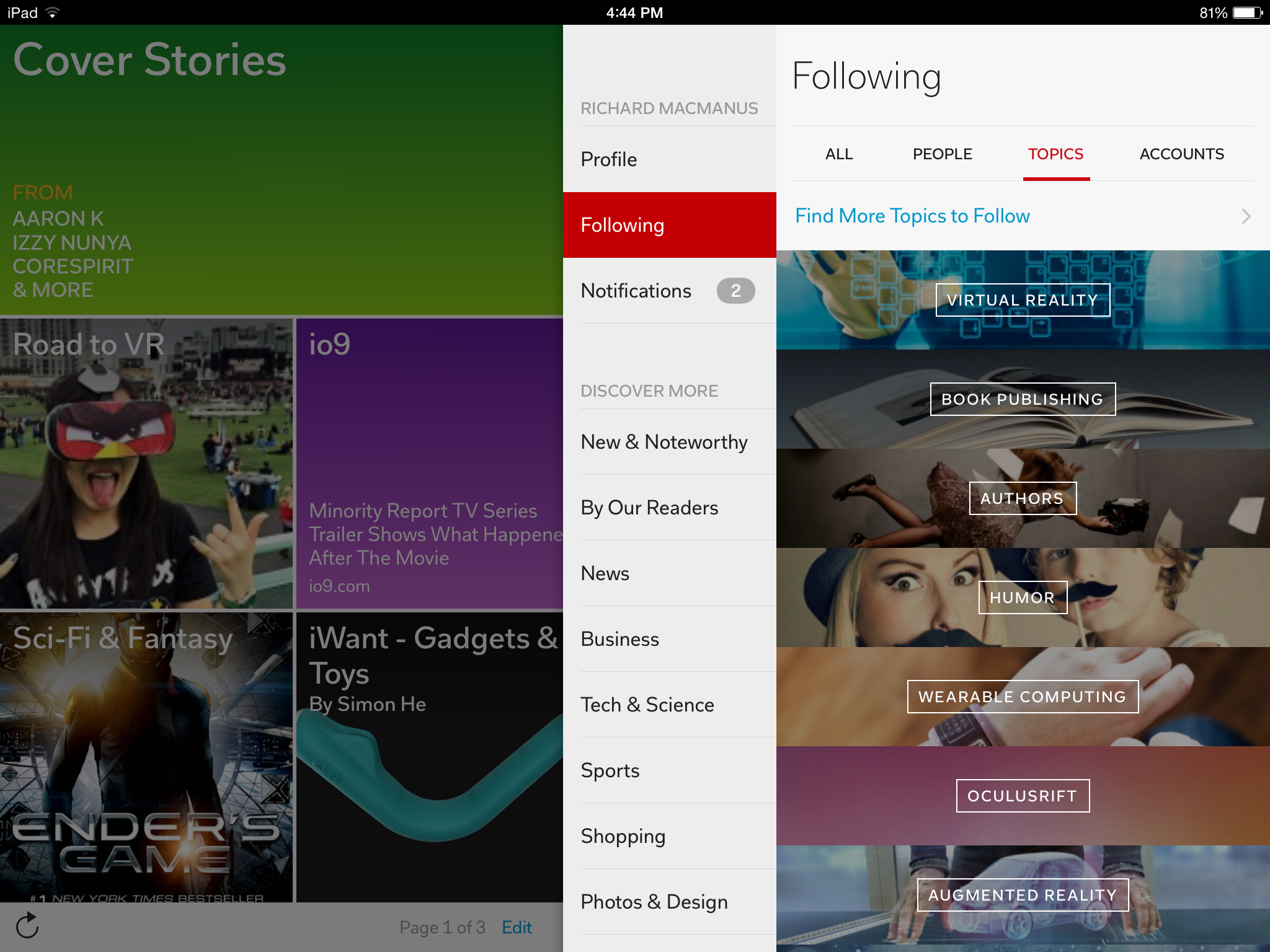 Most social media products rely on the ‘friend or follow’ model of connecting to other people. Friending usually means a two-way connection, whereas following is most often a one-way connection. Friending is inherently a strong connection, because it mimics how we operate in real life – friends socialize and share things together. But just how useful is it to have a follow connection with someone? I’m going to argue that it’s becoming less and less useful. Particularly on Twitter.
Most social media products rely on the ‘friend or follow’ model of connecting to other people. Friending usually means a two-way connection, whereas following is most often a one-way connection. Friending is inherently a strong connection, because it mimics how we operate in real life – friends socialize and share things together. But just how useful is it to have a follow connection with someone? I’m going to argue that it’s becoming less and less useful. Particularly on Twitter.
The follow model on Twitter has a glaring problem: it doesn’t scale in terms of usability. The math is simple. The more people you follow, the noisier it gets. So if you follow hundreds or thousands of individuals, as many of us do, you’ll get overwhelmed with chatter.
There is a solution, albeit one that Twitter discourages you from using. Perhaps because this solution does not require you to follow people on Twitter. I’m talking about lists.
Lists are my favorite feature of Twitter. I’d go as far as to say that most of the value, in terms of content, that I get from Twitter comes from lists. Put another way: most of the best tweets I see are from people I don’t follow.
The Value Of Lists
A Twitter list is essentially a group of people who have something in common. Twitter itself defines a list as “a curated group of Twitter users and a great way to organize your interests.” You can create your own public or private lists, or subscribe to the public lists of others. Regardless of whether you curate or someone else does, here’s a key point: you don’t need to follow a person in order to see their updates on a list. For example if you create a list of tennis players, you can add Novak Djokovic to it but not follow him personally.
Most of the lists I’ve created or subscribed to are topical. I have a list for health tech people, a list for people I interviewed for my book Trackers, and a list for Virtual Reality people and companies (the topic of my current book project). Some of my lists are personal in nature; such as a list for my friends and a list for my favorite tweeting authors. As well as creating my own lists, I subscribe to a number of public lists related to health tech, VR, and other interests.
Subscribing to public Twitter lists is often a better idea than creating your own. For example, I subscribe to the Digital Health list of Paul Sonnier. He’s a leading Twitter influencer in the health tech market, so he’s much better qualified to curate a health tech list than I am. There are 1,700+ people on Sonnier’s Digital Health list. I probably follow about 10% of them, at most. Yet I can see tweets from any of those 1,700+ people on Paul’s list, at any time, because I subscribe to his list. I feel much more connected with the health tech industry, thanks to Sonnier’s curation.

You may be thinking, well isn’t there a lot of noise too on a list with 1700+ people? That’s true, but it’s much easier to scan a topic-focused list of Twitter users and pick out the good stuff. A well curated list, like Mr Sonnier’s, will mostly stick to its topic.
Why Does Twitter Hate Lists?
The most common ways to use Twitter are via its website or on its mobile apps. Yet strangely, on both the Web and mobile, Twitter hides its lists away in an unintuitive menu. On Twitter.com, lists are absent from the top menu and hard to spot elsewhere. As for Twitter’s mobile apps, when iOS8 was released at first I thought the lists feature had been deleted from the app entirely. But after googling, I discovered its new location: click the Settings icon on your profile page (a tiny, wheel-like icon), and your lists are in a sub-menu below ‘Settings’. That’s right folks, your lists are in the Settings menu.
It’s no wonder lists aren’t as well used as they ought to be. For the record, I use Hootsuite to view my Twitter lists. The Hootsuite dashboard has a tabs interface so that you can further organize your lists. Another option is TweetDeck, an app that Twitter owns. But I’ve had syncing problems with TweetDeck in the past, so I’m afraid I can’t recommend it. Here’s a glimpse of my Hootsuite setup:

So why does Twitter hide away its lists? I can think of two reasons. Firstly, Twitter is obsessed with being a large scale social network like Facebook. It wants people to socialize on Twitter, which means follow and talk to other people. But that’s simply not going to happen, at least on the scale its executives want. Most people will do their social networking on Facebook, which has a massive social graph. Twitter’s true value is in its interest graph, not its social graph. In other words, it’s more valuable to follow topics rather than people on Twitter. Gee, I wonder what feature allows Twitter users to do that?
I suspect the second reason why Twitter discourages lists is that it thinks they’re too difficult for the average user to understand. But Twitter has shot itself in the foot here, because lists are easy to understand if you make the user interface simple. For a great example of this, look at how Flipboard does lists. Flipboard has topic “boards” (a.k.a. lists) that are front and center in the product and deliver immediate value to new users. I’m sure Flipboard finds this to be an effective way to on-board new users and encourage regular usage. Twitter badly needs new users and for them to be more active. So why not promote topical lists on the Twitter homepage, rather than the Twitter accounts of celebrities and power users who aren’t famous?

Finally, a word about Twitter and third party apps. We all know that Twitter blew it with the developer community in 2012, when it began to limit access to Twitter’s data. I won’t retread that, but I do think third party apps could make great use of lists. Take Nuzzel for example, the app that filters content based on who you follow on Twitter (and Facebook). The idea is to show you the most talked-about articles at any one time. Nuzzel is already a neat app, but how much more useful would it be if it could also filter based on Twitter lists? Imagine Nuzzel’s technology applied to Paul Sonnier’s health tech list; it would be like a Techmeme for health tech news.
The Case For Using Lists
Let’s return to my original question: how useful is it to have a one-way follow connection with someone? Clearly there is a lot of value to be had in following someone who has consistently good content and/or who you want to engage with. That’s why I follow Paul Sonnier on Twitter, for example. But there’s a limit to how many of those people I can keep track of, let alone interact with. That’s why it doesn’t make sense for me to follow the 1,700 people on Sonnier’s health tech list. Subscribing to his list is enough.
I’m not saying the follow model of social media connection will die any time soon. But there’s room for much more experimentation with groups of people in social media, especially ones who share a particular interest. Which is precisely what lists are for in Twitter.
So forget following people, or at least following masses of people. Create lists and subscribe to the topical lists that others have created. The interest graph is the core of Twitter and you should make better use of it. With any luck, Twitter will too.

Tweetdeck with its columns works well for me, allowing to me select people I should keep an eye on, while still being able to follow back and seeing a stream of tweets from heaps of people (including you, that’s how I got here :)).
Tweetdeck forever. I want to be able to swipe through my lists on my phone as though they were Tweetdeck columns.
Reblogged this on sonofbluerobot.
Agreed. Lists are my preferred way of “following” people now because I can classify them by category and it doesn’t clog up my feed when I’m not looking for whatever category of info they’re in. I still follow people I know, like, or admire though.
Another way that Twitter following is broken is follower limits. Once you follow more than 2000
people you are limited by an undisclosed follow limit. Most of the time it means you can’t follow anyone back promptly unless you unfollow others. Also I find with multiple timezones it is possible to follow a larger number of people now that overall posting volumes have dropped.
https://support.twitter.com/articles/66885-i-can-t-follow-people-follow-limits
I still find twitter very useful in following many communities. However I will look more at lists after being reminded of them.